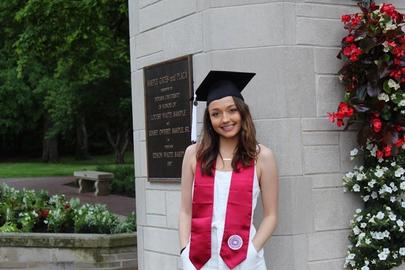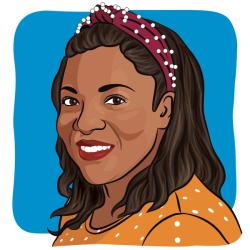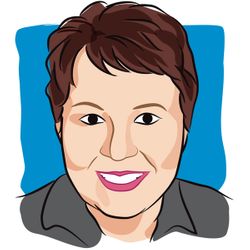- About
- Advertise / Support
- Contact
- CancerNetwork.com
- TargetedOnc.com
- OncLive.com
- OncNursingNews.com
- Terms & Conditions
- Privacy
- Do Not Sell My Information
© 2024 MJH Life Sciences™ and CURE - Oncology & Cancer News for Patients & Caregivers. All rights reserved.
From Segregation to Lifelong Advocacy: A Cancer Survivor Shares His Story

Jamie Cesanek, Assistant Web Editor for CURE®, joined the team in March 2021. She graduated from Indiana University Bloomington, where she studied journalism and minored in sociology and French. In her free time, she enjoys hiking, running, or enjoying time with friends and family. Email her at jcesanek@curetoday.com.
In an interview with CURE®, a survivor recounts how his experiences with cancer treatment in the 1960s, when he was treated in a segregated “colored” ward, have led him to a life of advocacy work.
In honor of National Cancer Survivor Month, CURE® spoke with Woodrow “Woody” Brokenburr about his experiences with cancer in the early 1960s, and how it led him to his involvement in advocacy for health equities in cancer care.
Brokenburr was diagnosed with osteosarcoma, a bone cancer, at age 9. At a time when he should’ve been playing outside, carefree, with his siblings and friends, he was informed he would need to have his left leg amputated.
“During the 60s, we really didn't know much about cancer,” said Brokenburr. “So it was the only solution at that time for a cancer diagnosis, to do an amputation. I lost my left leg above the knee to cancer.”
When Brokenburr went to the hospital for his cancer, he was sent to a separate “colored” ward, where patients were relegated to eight rooms in the basement of a 200-bed hospital, he said. At the time, he was living in a small town in central Florida where hospitals were still segregated.
“One of the ways that I survived during that period was my support system – there were two other little boys who were in the hospital with me at the same time,” said Brokenburr. “We sort of became the little menaces on that floor. I guess we could have been annoying, but we were just rolling up and down the hospital corridor. Because they had recently done a biopsy, I was in a wheelchair. So the two little boys would just push me as fast as they could and we would just giggle during that time. And after getting out of the hospital, my support system was really with family.”
Brokenburr has a large family, being the seventh of 10 children. During his cancer treatment, his family wasn’t sure what was going to happen to him for several months. At that time, hearing about a loved one’s cancer diagnosis was akin to hearing their death sentence, he said. When he eventually left the hospital, his family was extra careful with him.
“I was kind of treated with ‘kid gloves,’” said Brokenburr. “They were very loving and kind. And I guess after a while, they sort of determined I was going to be OK. So then I just got back to doing the regular chores and going on with my life.”
Before his diagnosis, Brokenburr had been an athletic child. He loved running and playing football, baseball and basketball. However, living without his left leg drastically changed all of that.
“My father always told me not to let what I couldn’t do interfere with what I could do,” said Brokenburr. “So they bought me a bike. And I started riding the bike with one leg. And then on Sundays, I had a crazy cousin and I used to pick her up, and she would pedal the left pedal while I would pedal the right, and we would just ride around town having a good time, being kids.”
Brokenburr tried not to spiral and feel sorry for himself after the amputation, he said. He did his best to embrace the challenges he faced with a positive attitude and accept help from his community, which eventually lead him to his involvement in advocacy for health equities.
“When I was going through my cancer experience, I got a lot of support from the community,” said Brokenburr. “They helped us with food and financially. So my intention after going through that was that I would give back as best I could.”
He started volunteering with the American Red Cross and decided he wanted to improve representation of minorities within the health care system.
“At the hospital, I never saw people at the front desk who looked like me,” said Brokenburr. “So, I thought I would become the first person. I worked at a front desk and also in the X-ray department.”
Brokenburr also became involved with the American Cancer Society, volunteering with Relay for Life for many years. He chaired the event in Thousand Oaks, California, and helped exceed the fundraising goals year after year, which led him to chairing development and operations for the California division of Relay for Life. He also aided in developing and rolling out strategies for the event across the U.S. He later became more involved in the research aspect, sitting as a stakeholder on the peer review committee at the national level. He joined the council that is responsible for awarding $200 million worth of research grants.
“One of the things that I've always been focused on is making sure that there was representation and the awarding of the research grants to minority investigators, and also making sure that we were looking at childhood issues as well as the cancers that were most devastating in the minority community,” said Brokenburr.
For the past 17 years, he has participated as a speaker in the Minority Training Program in Cancer Control Research at UCLA, which encourages minority master’s students and health professionals to pursue their doctoral degrees. He has also been a panelist and presented on the topic of health equities at Los Robles Medical Center and the Conejo Valley Rotary Club. Now, he shares his story through Survivorship Today, hoping that putting a face to a story will help spark empathy and lead to change.
“It was a good thing that I embraced the volunteerism part, because that has been really helpful in my life,” said Brokenburr. “I have met so many wonderful people, so many people who are focused on solving problems and making it better for other people who have challenges.”
Brokenburr wants more people to understand that health care disparities are often intertwined with other social determinants of health, such as where you live and what resources are available to you, he said. People living in a food desert may not have access to proper nutrition. He encourages patients to advocate for themselves by becoming involved with resources like the American Cancer Society and the American Association for Cancer Research.
“If you’re at the table, then you can affect change,” he said.
For more news on cancer updates, research and education, don’t forget to subscribe to CURE®’s newsletters here.
Related Content:



